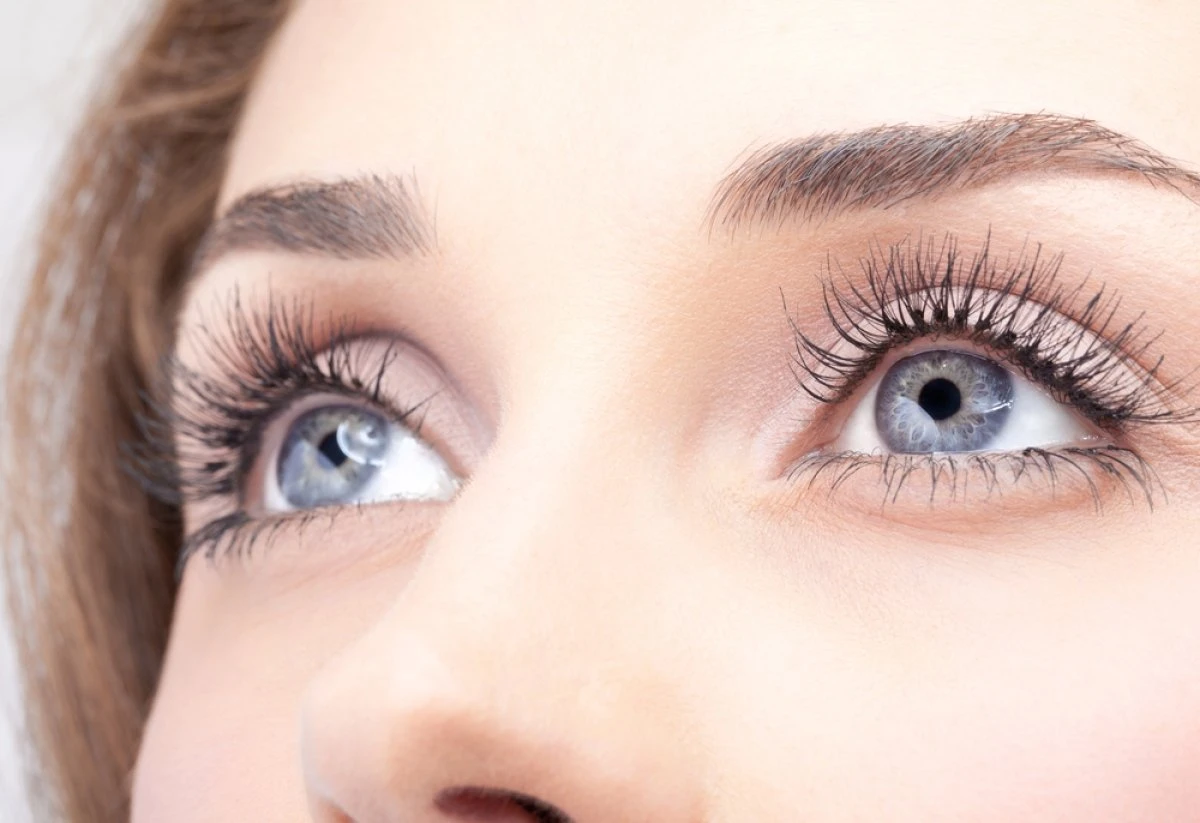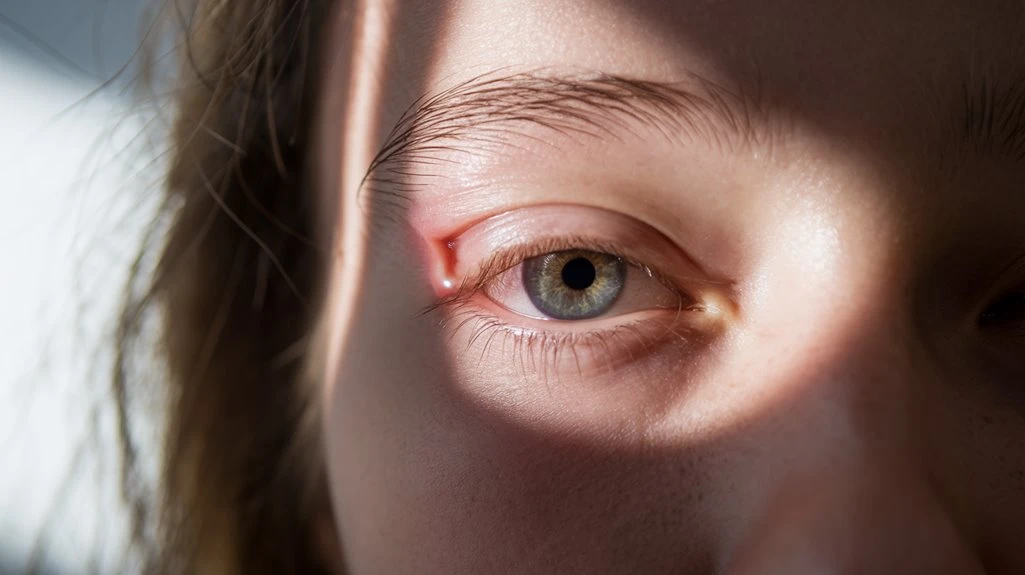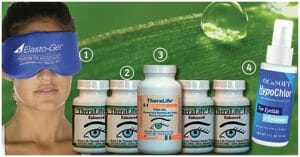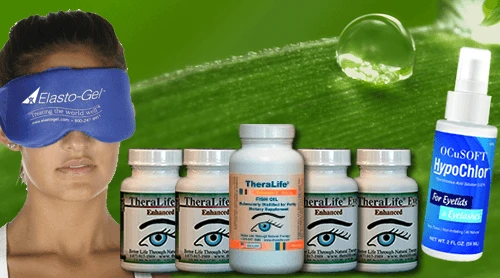To effectively recognize chalazion symptoms and understand how TheraLife’s products can benefit you, consider these approaches:
- Identify Physical Changes: Look for firm, round nodules and eyelid swelling, common signs of meibomian gland blockage. TheraLife products can help alleviate these symptoms with natural, non-invasive treatments.
- Notice Discomforts: Pay attention to mild pain, tenderness, and increased tearing, which may blur vision. TheraLife offers products designed to reduce discomfort and promote eye health.
- Understand Risk Factors: Be aware of demographic influences, lifestyle habits, and pre-existing conditions like blepharitis. TheraLife provides targeted solutions that cater to these risk factors.
- Differentiate from Styes: Know that styes are painful and erupt at the eyelid edge, whereas chalazia are generally painless and form further back. TheraLife’s products can assist in distinguishing and treating these conditions effectively.
- Seek Professional Diagnosis: A thorough examination and review of medical history are crucial. TheraLife supports this process with resources and products that enhance your understanding and management of eye conditions.
TheraLife’s approach focuses on comprehensive eye care, offering a range of products that cater to various eye conditions beyond chalazion, such as dry eyes, blepharitis, and more, ensuring holistic eye health and comfort.
All Natural Remedy For Chalazion That Works . When Drops Don’t Work.
Add To Cart
Key Takeaways
- Look for firm, round nodules on the eyelid indicating swelling and lumps.
- Note any mild pain and tenderness that diminishes within days.
- Watch for blurred vision due to larger chalazia pressing on the eyeball.
- Recognize risk factors such as poor eyelid hygiene and pre-existing conditions like blepharitis.
- Differentiate from styes by observing the painless nature and location further back on the eyelid.
Identify Physical Changes
When identifying physical changes related to a chalazion, you should pay close attention to any swelling and lumps on the eyelid. The lump characteristics typically manifest as a firm, round nodule that develops over a few days. It’s essential to observe the swelling patterns, which can range from mild to severe, affecting a larger part of the eyelid as the chalazion enlarges. Blockage of the meibomian glands is a main cause of chalazion, leading to the accumulation of oil and formation of a small mass. Regular monitoring and professional consultation can help prevent complications. Initially, the swelling may appear diffuse before localizing to the body of the eyelid. In severe instances, swelling can become so pronounced that it completely shuts the eye. These physical indicators, specifically the nodule’s firmness and the swelling’s progression, are key in differentiating a chalazion from other eyelid conditions. Accurate observation guarantees timely diagnosis and management.
Notice Common Discomforts
Beyond observing physical changes, it’s crucial to recognize the common discomforts associated with a chalazion. Initial signs include mild pain that typically diminishes within days, coupled with redness and swelling, particularly noticeable in the mornings.
You might experience discomfort or tenderness around the affected area, as well as increased tearing, leading to watery eyes. Larger chalazions can press on the eyeball, causing blurred vision. Though chalazions are generally painless, they often begin with a swollen eyelid and mild irritation.
Ongoing irritation manifests as a persistent lump, mild eye irritation, and sensitivity to touch. Although less painful than styes, chalazions can intermittently impact your vision due to the exerted pressure. Warm compresses are a common conservative management method to alleviate symptoms and promote healing.
Unlike styes, chalazions don’t produce a yellow spot or intense redness and aren’t accompanied by fever, underscoring their unique symptomatology.
Understand Risk Factors
Understanding the risk factors for chalazion formation is essential for effective prevention and management. Demographic influences play a considerable role; females and non-white races are more susceptible. Additionally, residing in the Northeast can further elevate your risk.
Lifestyle habits also contribute considerably. Smoking and poor eyelid hygiene, such as not thoroughly removing eye makeup, are notable risk factors. Touching or rubbing your eyes with unclean hands may increase chalazion development. Maintaining eyelid cleanliness is crucial for prevention, as it helps reduce the accumulation of debris and bacteria that can block oil glands.
Pre-existing conditions like blepharitis, meibomian gland dysfunction, and rosacea are key contributors, as are non-ocular inflammatory conditions. High lipid blood concentration, vitamin A deficiency, and hormonal changes also increase susceptibility. Adults and those with a past chalazion history are at higher risk, emphasizing the need for vigilance.
While diabetes decreases the odds, previous chalazions or styes make recurrence likely. Recognizing these factors allows for proactive management.
Differentiate From Styes
Although chalazia and styes may appear similar at first glance, distinct differences exist in their location and symptoms, making accurate differentiation vital for effective treatment.
Understanding these differences aids in proper management:
- Location: Chalazion characteristics include bumps found further back on the eyelid, while stye differences involve bumps at the eyelid’s edge.
- Pain and Sensitivity: Styes are painful and sensitive to touch, whereas chalazia are generally painless.
- Size and Swelling: Chalazia can grow large enough to press against the eyeball, causing blurry vision; styes often result in more extensive eyelid swelling. Chalazia, being non-painful lumps, are less likely to cause discomfort unless they become very large.
- Symptomatic Effects: Styes cause a gritty sensation and increased tearing; chalazia don’t typically produce such symptoms. Chronic dry eyes can contribute to the development of both chalazions and styes, highlighting the importance of addressing underlying conditions.
Recognizing these distinctions is essential for effective treatment and management.
Seek Professional Diagnosis
When faced with a suspicious bump on your eyelid, seeking a professional diagnosis is vital for accurate identification and treatment. A healthcare professional will conduct a thorough physical examination and review your medical history to uncover any underlying conditions like blepharitis or rosacea. They’ll assess the lump’s location and size, check for signs of infection, and evaluate any vision impact. Diagnostic tests, such as imaging tests or rarely a biopsy, may be performed if deeper involvement or malignancy is suspected. Regular eyelid hygiene is essential in managing chalazions, as it helps reduce inflammation and promote healing. Chalazions result from blockage of the meibomian glands, which produce oily meibum, leading to their formation.
| Assessment Aspects | Diagnostic Tests | Professional Evaluation |
|---|---|---|
| Physical Examination | Imaging Tests | Ophthalmologist Consultation |
| Medical History Review | Biopsy (Rare) | Detailed Eye Exam |
| Infection Signs | Clinical Diagnosis | Monitoring Symptoms |
| Vision Impact | Eyelid Examination | Prompt Medical Advice |
Immediate consultation guarantees proper management and symptom monitoring.
All Natural Remedy For Chalazion That Works . When Drops Don’t Work.
Add To Cart
Frequently Asked Questions
How Long Does a Chalazion Typically Last Without Treatment?
Without treatment, a chalazion’s average duration varies.
Small chalazions often resolve in 1-2 weeks with good eyelid hygiene, while larger ones can persist for weeks to months.
Treatment options like warm compresses and massage can accelerate healing.
If a chalazion grows or fails to improve after a month, seek medical evaluation.
In some cases, professional intervention, including surgery, becomes necessary to guarantee complete resolution and prevent complications.
Can Chalazions Affect Both Eyes Simultaneously?
Yes, chalazions can affect both eyes simultaneously, though bilateral occurrence is less common.
You might notice simultaneous development of these small, hard lumps on your upper and lower eyelids due to risk factors like blepharitis or rosacea.
While typically painless, they can become painful if infected.
It’s important to consult an eye care professional for proper diagnosis and management, particularly if you experience chalazions in both eyes at the same time.
Are There Any Home Remedies to Prevent Chalazions?
To prevent chalazions, incorporate home treatments and natural remedies into your routine.
Apply warm compresses daily to unblock oil glands. Maintain eyelid hygiene using mild baby shampoo to minimize bacterial buildup.
Integrate herbal remedies like aloe vera and tea bags for their anti-inflammatory properties. Enhance your diet with vitamins C, A, and E, and avoid fatty foods.
These strategies help reduce the likelihood of chalazion development effectively.
Is It Safe to Wear Contact Lenses With a Chalazion?
You can safely wear contact lenses with an uninfected chalazion, as it’s a fluid-filled sac not posing significant risk.
However, prioritize contact lens safety by guaranteeing the chalazion isn’t large enough to interfere with the lens, potentially causing irritation.
For chalazion prevention, consult an ophthalmologist regularly, especially if the chalazion seems infected or recurrent.
This professional guidance guarantees appropriate measures are taken to maintain both eye health and vision clarity.
Can Diet Influence the Development of Chalazions?
Imagine your body as a finely tuned machine, where dietary factors play a vital role in its performance. Nutritional deficiencies can disrupt this balance, potentially leading to chalazion development.
Consuming vitamin-rich foods like leafy greens and avocados boosts immunity, reducing risks. Conversely, high intake of sugary, fatty foods and caffeine can exacerbate skin conditions.
Maintaining a balanced diet with adequate hydration is essential for minimizing chalazion risk and promoting overall eye health.
All Natural Remedy For Chalazion That Works . When Drops Don’t Work.
Add To Cart
Conclusion
Recognizing chalazion symptoms is the first step toward effective management. Theralife’s products offer a comprehensive approach to eye health, benefiting customers by addressing various eye conditions, including chalazions. Pay attention to physical changes like a painless bump on your eyelid and common discomforts such as slight tenderness. Theralife’s natural remedies and supplements, as detailed on their website, support eye health and can help differentiate chalazions from styes. They emphasize the importance of understanding risk factors, such as previous occurrences or underlying skin conditions, and promote early identification for better outcomes. Their holistic approach ensures that customers receive guidance and products that prevent complications and support overall eye wellness. Always seek a professional diagnosis for confirmation and appropriate treatment alongside using Theralife’s offerings.
References
- 1.Unal M. Chalazion treatment. Orbit. 2008;27(6):397–398. doi: 10.1080/01676830802623174. [DOI] [PubMed] [Google Scholar]
- 2.Hen L, Chen X, Xiang Q, Zheng L, Pi L, Liu Q, et al. Prevalence of low serum vitamin a levels in young children with ehalazia in Southwest China. Am J Ophthalmol. 2014;157(5):1103–1108. doi: 10.1016/j.ajo.2014.02.020. [DOI] [PubMed] [Google Scholar]
- 3.Knop E, Knop N, Millar T, Obata H, Sullivan DA. The international workshop on meibomian gland dysfunction: report of the subcommittee on anatomy, physiology, and pathophysiology of the meibomian gland. Invest Ophthalmol Vis Sci. 2011;52(4):1938–1978. doi: 10.1167/iovs.10-6997c. [DOI] [PMC free article] [PubMed] [Google Scholar]
- 4.Yin Y, Gong L. Uneven Meibomian gland dropout over the tarsal plate and its correlation with Meibomian gland dysfunction. Cornea. 2015;34(10):1200–1205. doi: 10.1097/ICO.0000000000000533. [DOI] [PubMed] [Google Scholar]
- 5.Yin Y, Gong L. The evaluation of meibomian gland function, morphology and related medical history in Asian adult blepharokeratoconjunctivitis patients. Acta Ophthalmol. 2017;95(6):634–638. doi: 10.1111/aos.13136. [DOI] [PubMed] [Google Scholar]
- 6.Wu AY, Gervasio KA, Gergoudis KN, Wei C, Oestreicher JH, Harvey JT. Conservative therapy for chalazia: is it really effective? Acta Ophthalmol. 2018;96(4):e503–e509. doi: 10.1111/aos.13675. [DOI] [PMC free article] [PubMed] [Google Scholar]
- 7.Norris JH. Intralesional triamcinolone Acetonide injection versus incision and curettage for primary Chalazia: a prospective, Randomized Study. Am J Ophthalmol. 2012;153(5):1005–1006. doi: 10.1016/j.ajo.2012.01.022. [DOI] [PubMed] [Google Scholar]
- 8.Dhaliwal U, Bhatia A. A rationale for therapeutic decision-making in Chalazia. Orbit. 2005;24(4):227–230. doi: 10.1080/01676830590946907. [DOI] [PubMed] [Google Scholar]
- 9.Jordan GA, Beier K. Chalaizon. StatPearls [internet] Treasure Island (FL): StatPearls Publishing; 2019. [Google Scholar]
- 10.Nichols KK, Foulks GN, Bron AJ, Glasgow BJ, Dogru M, Tsubota K, et al. The international workshop on meibomian gland dysfunction:executive summary. Invest Ophthalmol Vis Sci. 2011;52(4):1922–1929. doi: 10.1167/iovs.10-6997a. [DOI] [PMC free article] [PubMed] [Google Scholar]
- 11.Liang QF, Gao C, Liang H, Du XH, Wang NL, Labbe A. In vivo confocal microscopy evaluation of meibomian glands in meibomian gland dysfunction patients. Chin J Ophthalmol. 2016;52(9):649–656. doi: 10.3760/cma.j.issn.0412-4081.2016.09.004. [DOI] [PubMed] [Google Scholar]
- 12.Villani E, Beretta S, De Capitani M, Galimberti D, Viola F, Ratiglia R. In vivo confocal microscopy of Meibomian glands inSjo¨gren’s syndrome. Invest Ophthalmol Vis Sci. 2011;52(2):933–939. doi: 10.1167/iovs.10-5995. [DOI] [PubMed] [Google Scholar]
- 13.Zhou S, Robertson DM. Wide-field in vivo confocal microscopy of meibomian gland acini and rete ridges in the eyelid margin. Invest Ophthalmol Vis Sci. 2018;59:4249–4257. doi: 10.1167/iovs.18-24497. [DOI] [PMC free article] [PubMed] [Google Scholar]
- 14.Ibrahim OM, Matsumoto Y, Dogru M, Adan ES, Wakamatsu TH, Shimazaki J, et al. In vivo confocal microscopy evaluation of meibomian gland dysfunction in atopic-keratoconjunctivitis patients. Ophthalmology. 2012;119:1961–1968. doi: 10.1016/j.ophtha.2012.04.001. [DOI] [PubMed] [Google Scholar]
- 15.Fukuoka S, Arita R, Shirakawa R, Morishige N. Changes in meibomian gland morphology and ocular higher-order aberrations in eyes with chalazion. Clin Ophthalmol. 2017;11:1031–1038. doi: 10.2147/OPTH.S133060. [DOI] [PMC free article] [PubMed] [Google Scholar]
- 16.Dhaliwal U, AroraVK SN, Bhatia A. Cytopathology of chalazia. Diagn Cytopathol. 2004;31(2):118–122. doi: 10.1002/dc.20092. [DOI] [PubMed] [Google Scholar]
- 17.Wojtowicz JC, Butovich IA, McMahon A, Hogan RN, Itani KM, Mancini R, et al. Time-dependent degenerative transformations in the lipidome of chalazia. Exp Eye Res. 2014;127:261–269. doi: 10.1016/j.exer.2014.08.008. [DOI] [PMC free article] [PubMed] [Google Scholar]
- 18.Jester JV, Rife L, Nii D, Luttrull JK, Wilson L, Smith RE. In vivo biomicroscopy and photography of meibomian glands in a rabbit model of meibomian gland dysfunction. Invest Ophthalmol Vis Sci. 1982;22:660–667. [PubMed] [Google Scholar]
- 19.Obata H. Anatomy and histopathology of human meibomian gland. Cornea. 2002;21:S70–S74. doi: 10.1097/01.ico.0000263122.45898.09. [DOI] [PubMed] [Google Scholar]
- 20.Chung SY, Hwang HS, Shin MC, Cho B-J, Han SY. Meibomian gland changes after incision of Chalazions by Meibography. J Korean Ophthalmol Soc. 2018;59(2):123–129. [Google Scholar]
- 21.Bitton E, Lacroix Z, Léger S. In-vivo heat retention comparison of eyelid warming masks. Cont Lens Anterior Eye. 2016;39(4):311–315. doi: 10.1016/j.clae.2016.04.002. [DOI] [PubMed] [Google Scholar]
- 22.Arita R, Morishige N, Shirakawa R, Sato Y, Amano S. Effects of eyelid warming devices on tear film parameters in normal subjects and patients with meibomian gland dysfunctio. Ocul Surf. 2015;13(4):321–330. doi: 10.1016/j.jtos.2015.04.005. [DOI] [PubMed] [Google Scholar]
- 23.Ngo W, Srinivasan S, Jones L. An eyelid warming device for the management of meibomian gland dysfunction. J Optom. 2019;12(2):120–130. doi: 10.1016/j.optom.2018.07.002. [DOI] [PMC free article] [PubMed] [Google Scholar]
- 24.Finis D, Hayajneh J, König C, Borrelli M, Schrader C, Geerling G. Evaluation of an automated thermodynamic treatment ( LipFlow®) system for meibomian gland dysfunction: a prospective, randomized, observermasked trial. Ocul Surf. 2014;12(2):146–154. doi: 10.1016/j.jtos.2013.12.001. [DOI] [PubMed] [Google Scholar]
- 25.Craig JP, Chen YH, Turnbull PR. Prospective trial of intense pulsed light for the treatment of meibomian gland dysfunction. Invest Ophthalmol Vis Sc. 2015;56(3):1965–1970. doi: 10.1167/iovs.14-15764. [DOI] [PubMed] [Google Scholar]
- 26.Nakayama N, Kawashima M, Kaido M, Arita R, Tsubota K. Analysis of meibum before and after intraductal meibomian gland probing in eyes with obstructive meibomian gland dysfunction. Cornea. 2015;34(10):1206–1208. doi: 10.1097/ICO.0000000000000558. [DOI] [PubMed] [Google Scholar]
- 27.Olami Y, Zajicek G, Cogan M, Gnessin H, Pe’er J. Turnover and migration of meibomian gland cells in rats’ eyelids. Ophthalmic Res. 2001;33:170–175. doi: 10.1159/000055665. [DOI] [PubMed] [Google Scholar]
- 28.Maskin SL, Testa WR. Growth of meibomian gland tissue after intraductal meibomian gland probing in patients with obstructive meibomian gland dysfunction. Br J Ophthalmol. 2018;102(1):59–68. doi: 10.1136/bjophthalmol-2016-310097. [DOI] [PMC free article] [PubMed] [Google Scholar]





